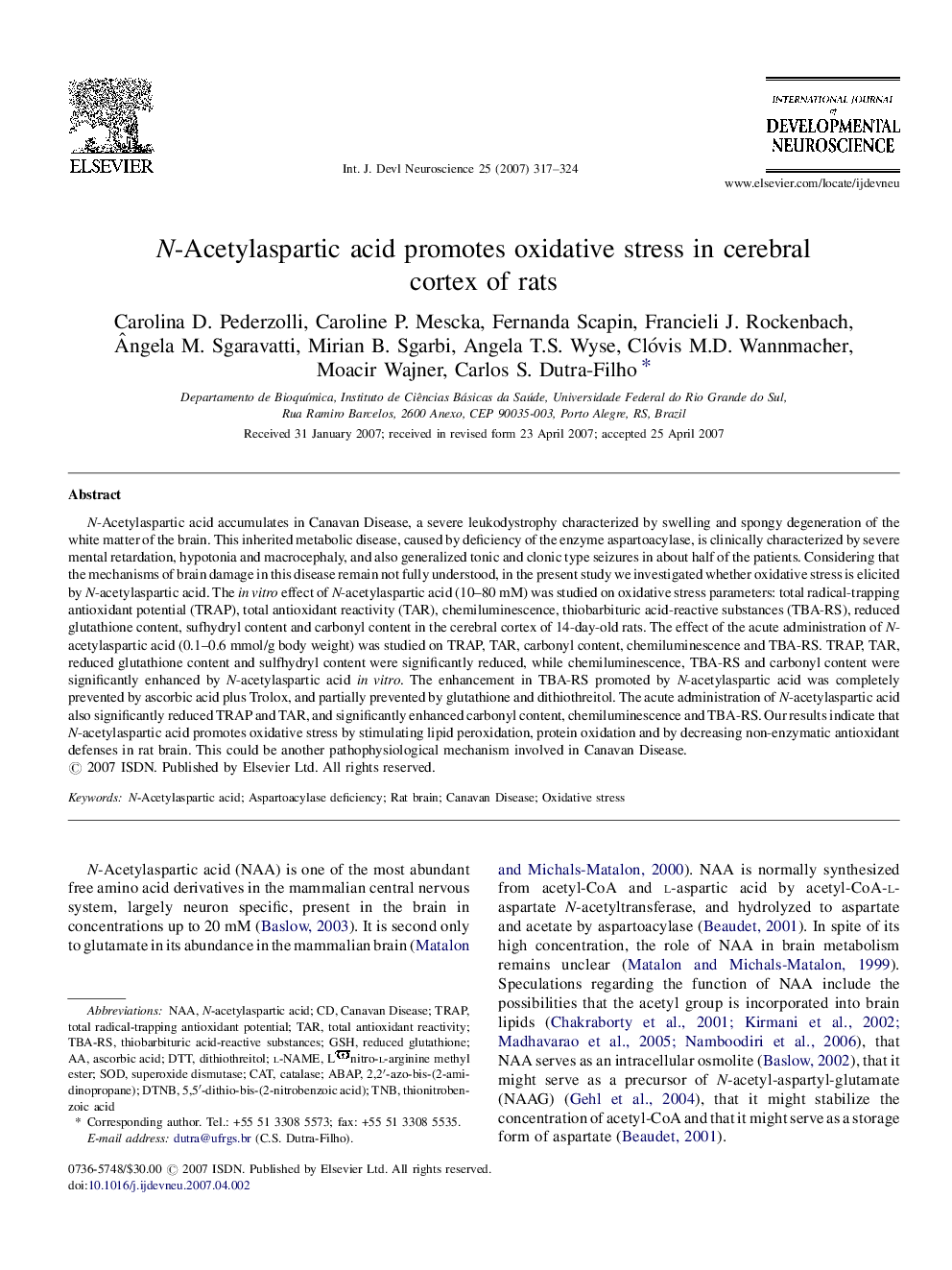| کد مقاله | کد نشریه | سال انتشار | مقاله انگلیسی | نسخه تمام متن |
|---|---|---|---|---|
| 2787083 | 1568450 | 2007 | 8 صفحه PDF | دانلود رایگان |

N-Acetylaspartic acid accumulates in Canavan Disease, a severe leukodystrophy characterized by swelling and spongy degeneration of the white matter of the brain. This inherited metabolic disease, caused by deficiency of the enzyme aspartoacylase, is clinically characterized by severe mental retardation, hypotonia and macrocephaly, and also generalized tonic and clonic type seizures in about half of the patients. Considering that the mechanisms of brain damage in this disease remain not fully understood, in the present study we investigated whether oxidative stress is elicited by N-acetylaspartic acid. The in vitro effect of N-acetylaspartic acid (10–80 mM) was studied on oxidative stress parameters: total radical-trapping antioxidant potential (TRAP), total antioxidant reactivity (TAR), chemiluminescence, thiobarbituric acid-reactive substances (TBA-RS), reduced glutathione content, sufhydryl content and carbonyl content in the cerebral cortex of 14-day-old rats. The effect of the acute administration of N-acetylaspartic acid (0.1–0.6 mmol/g body weight) was studied on TRAP, TAR, carbonyl content, chemiluminescence and TBA-RS. TRAP, TAR, reduced glutathione content and sulfhydryl content were significantly reduced, while chemiluminescence, TBA-RS and carbonyl content were significantly enhanced by N-acetylaspartic acid in vitro. The enhancement in TBA-RS promoted by N-acetylaspartic acid was completely prevented by ascorbic acid plus Trolox, and partially prevented by glutathione and dithiothreitol. The acute administration of N-acetylaspartic acid also significantly reduced TRAP and TAR, and significantly enhanced carbonyl content, chemiluminescence and TBA-RS. Our results indicate that N-acetylaspartic acid promotes oxidative stress by stimulating lipid peroxidation, protein oxidation and by decreasing non-enzymatic antioxidant defenses in rat brain. This could be another pathophysiological mechanism involved in Canavan Disease.
Journal: International Journal of Developmental Neuroscience - Volume 25, Issue 5, August 2007, Pages 317–324